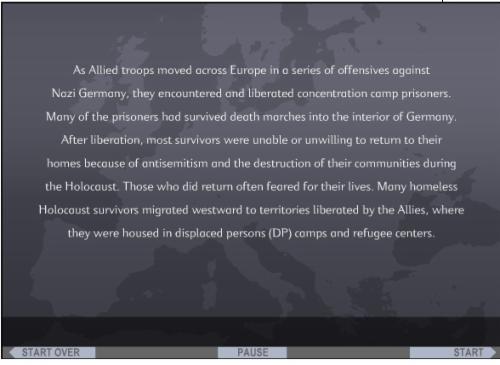Kaserne History
Displaced Persons Camp 1946 - 1950
________________________________
As Allied troops moved across Europe in a series of offensives against Nazi Germany, they encountered and liberated concentration camp prisoners.
Many of the prisoners had survived death marches into the interior of Germany. After liberation, most Jewish survivors were unable or unwilling to return to eastern Europe because of antisemitism and the destruction of their communities during the Holocaust. Those who did return often feared for their lives. Many homeless Holocaust survivors migrated westward to territories liberated by the Allies, where they were housed in displaced persons camps (DP) and refugee centers while waiting to leave Europe.
Click on the Picture above to see the Animated Map:
The Aftermath of the Holocaust
Flash Player needed
Source: The United States Holocaust Memorial Museum
________________________________________________________
Displaced Persons Camps in Europe
1945-1950
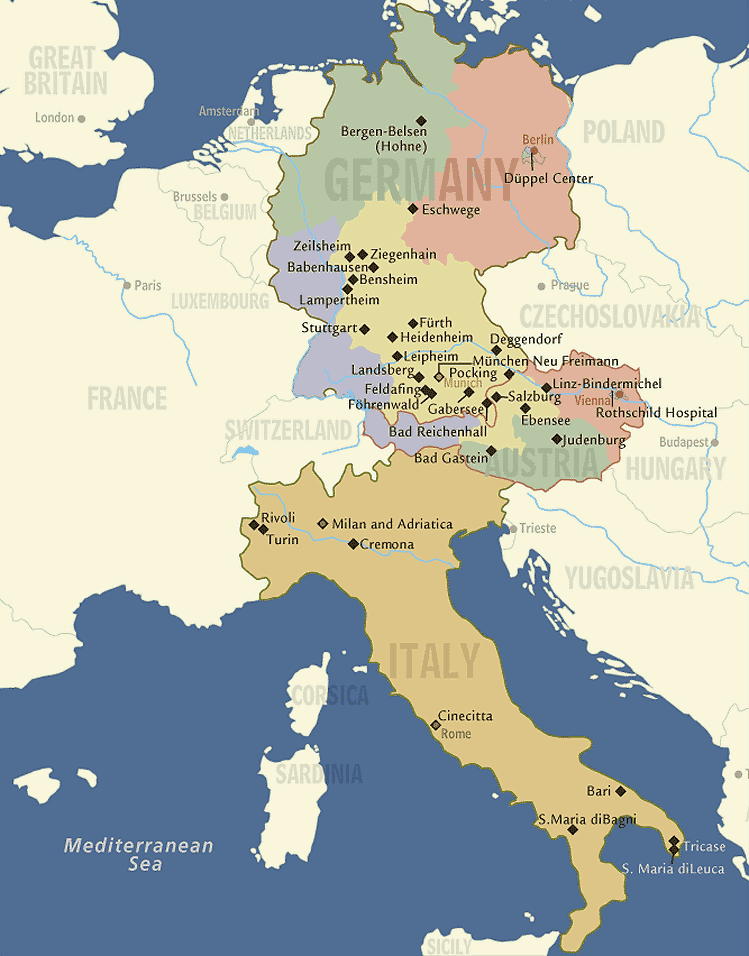
Source:The United States Holocaust Memorial Museum
Displaced Persons Administration Even in the midst of the war years, the Allied powers anticipated that a refugee crisis would follow the defeat of Nazi Germany. As early as 1943, Allied forces began drafting plans to meet the challenge of liberating, rehabilitating, and repatriating the millions of displaced persons (DPs) who would come under Allied control. Expecting that DPs would want to return quickly to their native lands, the American, British, Soviet, and French allies designated their armies (each of which occupied a sector of Germany, and Austria) as the immediate providers of relief to the refugees. The colossal relief effort was expected to take no longer than six months. Between May and December 1945, the military, along with civilian rescue teams of the United Nations Relief and Rehabilitation Administration (UNRRA), successfully repatriated more than six million DPs. But the army was ill-prepared to handle the one million DPs, mostly from eastern Europe and including 50,000 Jews, who refused to return to the lands where their families had been massacred and where antisemitism still ran rampant. The Jewish DPs (known as the "Sh'erit ha-Pletah"--the "Surviving Remnant") became long-term wards of UNRRA and the occupying forces, especially the American and British armies. The often harsh treatment of these displaced persons between April and August 1945 blighted the record of the United States and Britain in the months following liberation. FROM MILITARY RULE TO INTERNAL AUTONOMY Three days after the liberation of Bergen-Belsen, Josef Rosensaft was elected head of the first Jewish DP committee. Similar committees were set up in other DP camps. However, relations between the Jewish DPs and the Allied military authorities soon became strained. Curfews were imposed and the DPs were given limited rations. Many had to wear concentration camp uniforms and they were often housed in camps with non-Jewish Poles and other Europeans, sometimes even with Nazi collaborators. American Jewish army chaplains served as representatives of the Jewish displaced persons in the first few months by carrying mail and requests for them. Still, relations between Jewish DPs and the army deteriorated to the point that President Harry Truman commissioned Earl G. Harrison--dean of the University of Pennsylvania Law School and American envoy to the Inter-Governmental Committee on Refugees--to survey the DP camps. In August 1945, Harrison recommended that the Jews be recognized as a distinct nationality, housed in exclusively Jewish camps, and aided in their eventual emigration from Germany. Under the guidance of President Truman, General Dwight D. Eisenhower responded swiftly to the recommendations. By late 1945, camp operations were administered entirely by UNRRA and other voluntary agencies, most notably the American Jewish Joint Distribution Committee. Early in 1946 those agencies and the Allied armies recognized a new de facto authority--the organized Jewish DPs themselves. In February 1946, a Congress of the Sh'erit ha-Pletah elected the Central Committee of Liberated Jews in the American zone. Zalman Grinberg and Samuel Gringauz became its official representatives. Similarly, in September 1945 in Bergen-Belsen, Josef Rosensaft became the recognized representative in the British zone. With the Americans allowing Jews fleeing Poland to enter the American zone, the UNRRA and JDC providing supplies to the DP camps, and a Jewish Committee managing each camp, the "Sh'erit ha-Pletah" prepared to enter a brief period of autonomy. ESTABLISHING A JEWISH SOCIETY By mid-1947, the number of Jewish DPs in Germany, Austria, and Italy had reached 250,000. This number included 150,000 Polish Jewish survivors, repatriated from the Soviet Union, who fled eastern Europe after the Kielce pogrom in Poland on July 4, 1946. This pogrom claimed 42 Jewish lives. Widespread anti-Jewish violence in southern Poland convinced many survivors that they could not return to their prewar homes. The Central Committees of the American and British zones established working societies in the DP camps with the aid of UNRRA, from 1948, with its successor agency (the International Relief Organization; IRO), and with Jewish relief organizations like the JDC and its British counterpart the Jewish Relief Unit (JRU). They created services that helped survivors trace their relatives, gather religious and educational supplies, and attend cultural and athletic events. The Organization for Rehabilitation through Training (ORT) trained Jews to enter the work force. The leaders of the Central Committees served as recognized representatives for the Jewish DPs to the Allied authorities. Eventually, members of the "Sh'erit ha-Pletah" began to protest their extended stay in DP camps and to denounce the British for refusing both to recognize Jews as a distinct nationality and to open immigration to Palestine. In late 1946, President Truman ordered that preference be given to the DPs with regard to restrictive US immigration quotas. Under this Truman directive, 17,000 Jewish DPs entered the US In 1948 and again in 1950, Congress passed laws allowing more open immigration for refugees to America. With the passage of the 1948 and 1950 DP Acts and the establishment of the state of Israel in 1948, the Jewish DPs left Europe en masse and settled predominantly in Israel and the United States. The Central Committees dissolved in 1951, and by 1952 all but one DP camp had closed Displaced Persons From 1945 to 1952, more than 250,000 Jewish displaced persons (DPs) lived in camps and urban centers in Germany, Austria, and Italy. These facilities were administered by Allied authorities and the United Nations Relief and Rehabilitation Administration (UNRRA). Among the concerns facing these Jewish DPs in the years following the Holocaust were the problems of daily life in the displaced persons camps, Zionism, and emigration. DAILY LIFE Soon after liberation, survivors began searching for their families. UNRRA established the Central Tracing Bureau to help survivors locate relatives who had survived the concentration camps. Public radio broadcasts and newspapers contained lists of survivors and their whereabouts. The attempt to reunite families went hand-in-hand with the creation of new ones; there were many weddings and many births in the DP camps. Schools were soon established and teachers came from Israel and the United States to teach the children in the DP camps. Orthodox Judaism also began its rebirth as yeshivot (religious schools) were founded in several camps, including Bergen-Belsen, Foehrenwald, and Feldafing. Religious holidays became major occasions for gatherings and celebrations. Jewish volunteer agencies supplied religious articles for everyday and holiday use. The DPs also transformed the camps into active cultural and social centers. Despite the often bleak conditions--many of the camps were former concentration camps and German army camps--social and occupational organizations soon abounded. Journalism sprang to life with more than 170 publications. Numerous theater and musical troupes toured the camps. Athletic clubs from various DP centers challenged each other. ZIONISM Zionism (the movement to return to the Jewish homeland in what was then British-controlled Palestine) was perhaps the most incendiary question of the Jewish DP era. In increasing numbers from 1945-1948, Jewish survivors, their nationalism heightened by lack of autonomy in the camps and having few destinations available, chose British-controlled Palestine as their most desired destination. The DPs became an influential force in the Zionist cause and in the political debate about the creation of a Jewish state. They condemned British barriers to open immigration to Palestine. Agricultural training farms and communes that prepared the DPs for the pioneering life were founded in many DP camps. Zionist youth groups instilled an affinity for Israel among the young. David Ben-Gurion, leader of the Jewish community in Palestine, visited DP camps several times in 1945 and 1946. His visits raised the DPs' morale and rallied them in support of a Jewish state. The Jewish Agency (the de facto Jewish authority in Palestine) and Jewish soldiers from the British Army's Jewish Brigade further consolidated the alliance between the DPs and the Zionists, often assisting illegal immigration attempts. Mass protests against British policy became common occurrences in the DP camps. EMIGRATION After liberation, the Allies were prepared to repatriate Jewish displaced persons to their homes, but many DPs refused or felt unable to return. The Allies deliberated and procrastinated for years before resolving the emigration crisis, although some Allied officials had proposed solutions just months after liberation. Earl Harrison, in his August 1945 report to President Truman, recommended mass population transfer from Europe and resettlement in British-controlled Palestine or the United States. The report influenced President Truman to order that preference be given to DPs, especially widows and orphans, in US immigration quotas. Great Britain, however, claimed that the United States had no right to dictate British policy insofar as the admission of Jews to Palestine was concerned. Truman alone could not raise restrictive US and British immigration quotas, but he did succeed in pressuring Great Britain into sponsoring the Anglo-American Committee of Inquiry. This bi-national delegation's suggestions included the admission of 100,000 Jewish DPs to Palestine. Britain's rejection of the report strengthened the resolve of many Jews to reach Palestine and, from 1945-1948, the Brihah ("escape") organization moved more than 100,000 Jews past British patrols and illegally into Palestine. British seamen captured many of the ships used in the operations and interned the passengers in camps on the island of Cyprus. The British attack on one such ship, the "Exodus 1947," attracted worldwide publicity and strengthened support for the DPs' struggle to emigrate. On May 14, 1948, the United States and the Soviet Union recognized the state of Israel. Congress also passed the Displaced Persons Act in 1948, authorizing 200,000 DPs to enter the United States. The law's stipulations made it unfavorable at first to the Jewish DPs, but Congress amended the bill with the DP Act of 1950. By 1952, over 80,000 Jewish DPs had immigrated to the United States under the terms of the DP Act and with the aid of Jewish agencies. With over 80,000 Jewish DPs in the United States, about 136,000 in Israel, and another 20,000 in other nations, including Canada and South Africa, the DP emigration crisis came to an end. Almost all of the DP camps were closed by 1952. The Jewish displaced persons began new lives in their new homelands around the world. From 1945 to 1952, more than 250,000 Jewish displaced persons (DPs) lived in camps and urban centers in Germany, Austria, and Italy. These facilities were administered by Allied authorities and the United Nations Relief and Rehabilitation Administration (UNRRA). Among the concerns facing these Jewish DPs in the years following the Holocaust were the problems of daily life in the displaced persons camps, Zionism, and emigration. Source: The United States Holocaust Memorial Museum |
________________________________________________________
The Displaced Persons Camp Babenhausen
The Babenhausen DP Camp 1946-1950 ________________________ Babenhausen was a mid-size Jewish DP camp in the Frankfurt district of the American-occupied zone. During the war it had been a camp for Soviet prisoners of war, and the meager barracks sometimes made for harsh housing conditions. These dismal conditions were reported in a December 13, 1946, issue of the Eschwege camp newspaper, Unser Hoffnung (Our Hope): Housing conditions here [in Babenhausen] are horrible. They used to be stalls for the horses of the Third Reich; now they are homes for the surviving Jews. Jews did not want to leave the trains so as to have to move in here. The U.S. Army used the camp immediately after the war to hold German military and civilian personnel who were awaiting trial. The camp did not open to Jews until September 29, 1946, when a train bearing 1,000 Jewish refugees from the Soviet Union arrived. When 1,200 more arrived two days later, the new residents lobbied the Army's Office on Jewish Affairs to protest the camp's conditions. Nevertheless, the camp remained open and it became a substantial community that even earned a visit from Zionist leader David Ben-Gurion in late 1946. The residents of Babenhausen DP camp founded a Talmud Torah (religious elementary school) as well as a secular school. The camp population had reached 3,026 by October 1949, and the camp closed on April 25, 1950. Source: The United States Holocaust Memorial Museum |
source:


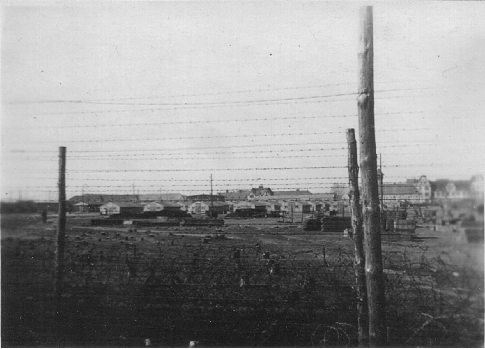


_________________________________________________________________________
are used with the kind permission from
The American Jewish Joint Distribution Committee © 2014
All photos below can also be seen at the JDC website at:
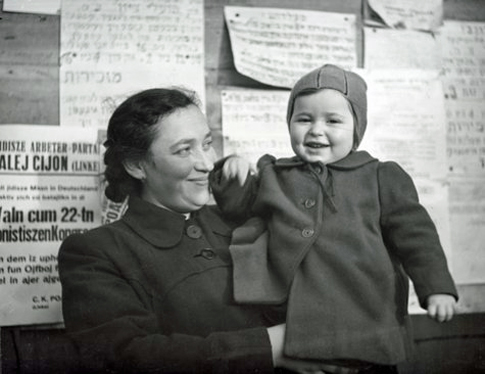
© The American Jewish Joint Distribution Committee
Photographer: Al Taylor
The bulletin board at Babenhausen camp, near Darmstadt was a favorite gathering point for Jewish refugees from Poland seeking to be reunited with friends and family as they continued to arrive in the U.S. Zone. Germany, c. 1946, The bulletin board at Babenhausen camp, near Darmstadt was a favorite gathering point for Jewish refugees from Poland seeking to be reunited with friends and family as they continued to arrive in the U.S. Zone.
Germany, c. 1946,
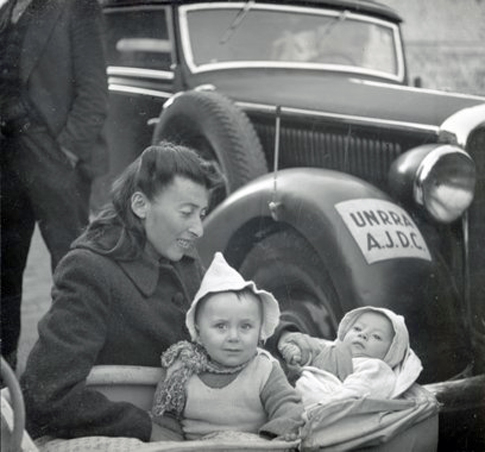
Source:
© The American Jewish Joint Distribution Committee
Photographer: Al Taylor
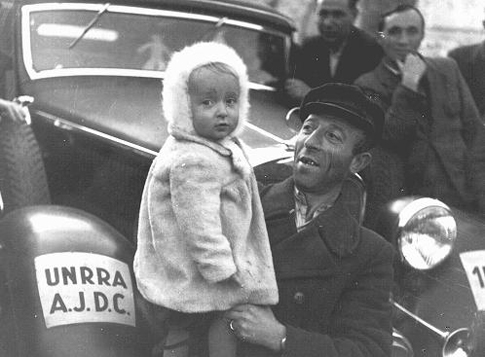
Source:
© The American Jewish Joint Distribution Committee
Photographer: Al Taylor
Jewish displaced persons from Poland in a camp UNRRA (United Nations Administration for relief and reconstruction).
The sign on the car indicates that the seal (American Joint Distribution Committee,American Jewish charity)was active in this camp.
Babenhausen, circa 1946.
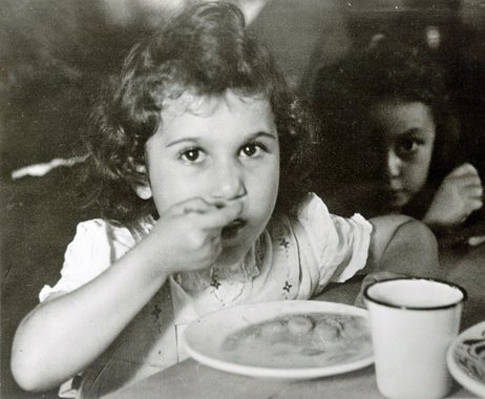
Source:
© The American Jewish Joint Distribution Committee
Even as some camps closed, many displaced persons remained. JDC's supplemental rations became more essential as dwindling funds led tolarge cutbacks in IRO support.
This girl and her mother waited to depart for the US
Austria c. 1949
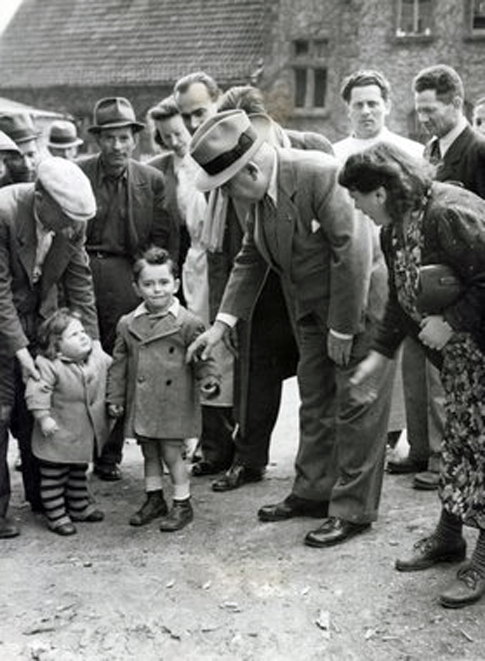
Source:
© The American Jewish Joint Distribution Committee
Photographer: Al Taylor
As the first Director-General of UNRRA, Herbert H. Lehman, wrote in 1945, “The only way to have avoided mistakes would have been to make the greater mistake of doing nothing.” Still involved later, as a JDC Vice-Chairman, he visited Jewish children and their parents at Jaeger Kaserne, on a JDC tour ofDP camps to evaluate services and programs.
Germany, c. 1949.
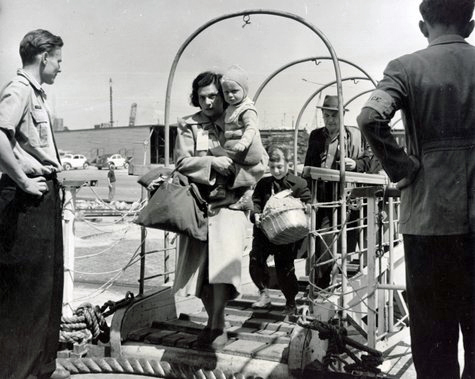
Source:
© The American Jewish Joint Distribution Committee
Photographer: Al Taylor
Jewish survivors board a ship at Bremerhaven leaving for the U.S. The JDC Emigration Service furnished emigrants with clothing, luggage, pocket money, and children's toys. Germany, c. 1949
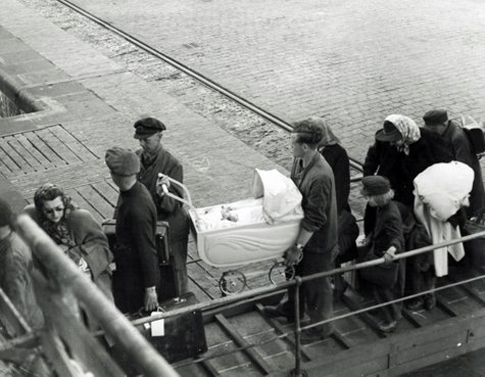
Source:
© The American Jewish Joint Distribution Committee
Photographer: Al Taylor
The S.S. Marine Flasher was the first ship to transport Jewish displaced persons to the United States. In addition to travel costs, JDC provided entry assistance, kosher food and other necessities. One of the youngest among 450 passengers aided by JDC, a baby girl carried on board in her new carriage leaves Bremerhaven for New York. Germany, c. 1946.
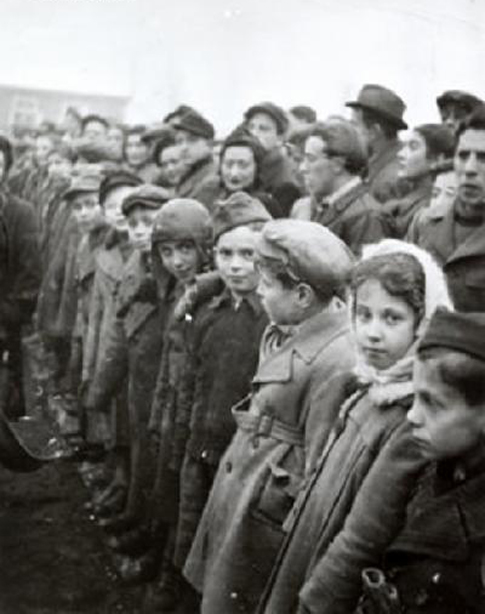
Source:
© The American Jewish Joint Distribution Committee
Those who made it through the devastations of theHolocaust found themselves at the end of the war with nothing to live on and no place to go. Refugees with newly provided clothes lined up for counting at a displaced persons camp. Germany, c. 1945.
please do visit the JDC website:
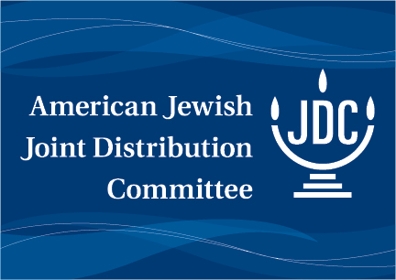
click on logo obove
also visit the JDC archives website:
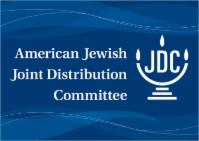
click on logo obove
History of JDCFounded during World War I, the American Jewish Joint Distribution Committee (JDC) was the first Jewish organization in the United States to dispense large-scale funding for international relief. World War I left in its wake the seeds of many additional catastrophes—pogroms, epidemics, famine, revolution, and economic ruin—and JDC played a major role in rebuilding the devastated communities of Eastern Europe and Palestine. JDC’s relief activities, emigration aid, and rescue operations were critical following the Nazi rise to power and the outbreak of World War II. After the war, JDC mobilized to support and resettle survivors, help reconstruct the remnant communities of Europe, create a network of social welfare services in the fledgling State of Israel, set up an extensive assistance program for Jews in North Africa and the Muslim world, and provide discreet relief behind the Iron Curtain. With the fall of Communism, JDC established cultural and educational programs to foster a sense of Jewish identify in Eastern Europe and the former Soviet Union and developed a broad welfare system for needy elderly and holocaust survivors. Active today in more than 70 countries, JDC and its partners work to alleviate hunger and hardship, rescue Jews in danger, create lasting connections to Jewish life, and help Israel overcome the social challenges of its most vulnerable citizens, both Jewish and non-Jewish. JDC’s reach extends beyond the global Jewish community by providing non-sectarian disaster relief and long-term development assistance worldwide. |
all pictures in this section are used with the kind permission from
The American Jewish Joint Distribution Committee © 2014
---------------------------------------------------------------------------------------------------
all pictures below in this section
source:
© Yad Vashem
can be seen at :

click on logo above

Babenhausen, Germany 1946
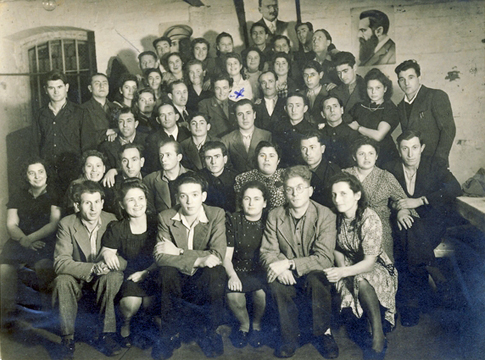
The "Dror" group at the DP camp Babenhausen Germany 1946
Habonim Dror is a Jewish Socialist-Zionist cultural youth movement, wich exists to educate and bring Jewish culture to its members, both within Israeli society and in other parts of the world where young Jews live. Habonim Dror: is a Jewish Socialist-Zionist cultural youth movement, which exists to educate and bring Jewish culture to its members, both within Israeli society and in other parts of the world where young Jews live. |

A group photograph at the DP camp Babenhausen, Germany 1946
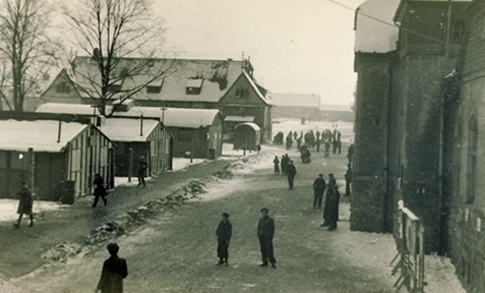
Source:
View of a street of the Babenhausen Displaced Persons camp 1946
Please visit the Yad Vashem website

please click on logo above
To learn more about Yad Vashem
please click on logo below

__________________________________________________________________
all pictures below in this section
source:
© The United States Holocaust Memorial Museum

| David Ben-Gurion (1886-1973) Zionist leader who became the first prime minister of the State of Israel. Born in Plonsk, Poland, Ben-Gurion was a Zionist from his early youth. He was educated at a Hebrew school established by his father, an ardent Zionist, and by his mid-teens, Ben-Gurion was in charge of the local Zionist youth group known as Ezra, whose members spoke only Hebrew among themselves. At the age of 18 he became a teacher in a Warsaw Jewish school and joined the Socialist-Zionist Poalei Tzion movement. He immigrated to Palestine in 1906, where he took part in the creation of the first agricultural workers' commune (which evolved into the kvutzah and finally the kibbutz), and helped establish the Jewish self-defense group, Hashomer (The Watchman). Following the outbreak of World War I he was deported by the Ottoman authorities. Ben-Gurion traveled on behalf of the Socialist-Zionist cause to New York, where he met and married Paula Monbesz, a fellow Poalei Tzion activist. He returned to Palestine in the uniform of the Jewish Legion, a new Jewish unit in the British Army. Ben-Gurion was one of the founders of the Histadrut (the General Federation of Labor) in Palestine and was its secretary-general from 1921 to 1935. In 1935 he also became chairman of the Zionist Executive and of the Jewish Agency for Palestine, holding both posts up to 1948. Ben-Gurion spent much of the first two years of World War II in the U.S., where he worked to mobilize American Jewry's support for a resolution calling for Palestine to be opened for large-scale Jewish immigration and, after the war, to become a Jewish commonwealth under Jewish authority. This resolution (the Biltmore Program) was adopted in May 1942 at a conference of American Zionists in New York. From the end of 1942, Ben-Gurion took part in organizing the Yishuv for rescue operations, but he left political action in the hands of the Jewish Agency departments. He was, on the whole, skeptical about the chances of success for rescue efforts, especially after the failure of the Bermuda Conference of April 1943 and the Joel Brand "blood for trucks" negotiations in the summer of 1944, and therefore focused on what he considered to be the long-term political solutions to the root causes of the Holocaust. In the immediate postwar period, Ben-Gurion was very influential in molding the Jewish displaced persons in Europe into a dynamic force for the Zionist cause. During his three tours of the DP camps, in October 1945, and in January and October 1946, Ben-Gurion invigorated and inspired the DPs by addressing them not as powerless victims, but as partners in a national struggle. On May 14, 1948 Ben-Gurion proclaimed the establishment of the Jewish State of Israel. He served as both prime minister and defense minister in the subsequent War of Independence. In late 1953, Ben-Gurion left the government and retired to Kibbutz Sde Boker in the Negev. He returned to political life after the Knesset elections in 1955, assuming the post of defense minister and later the premiership. In June 1963 Ben-Gurion resigned as prime minister, but remained active politically. In June 1970, Ben-Gurion retired from political life and returned to Sde Boker where he died in 1973. Source: The United States Holocaust Memorial Museum |

Source: The United States Holocaust Memorial Museum
David Ben-Gurion addresses Jewish DPs at a public forum in the Babenhausen displaced persons camp near Frankfurt
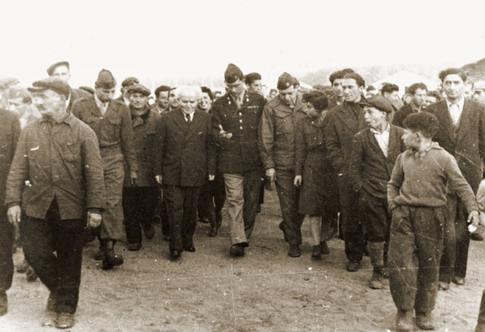
Rabbi Herbert Friedman escorts Zionist leader David Ben-Gurion through a crowd of admirers in the Babenhausen DP camp.
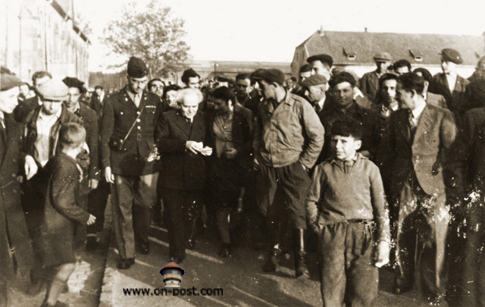
Rabbi Herbert Friedman escorts Zionist leader David Ben-Gurion through a crowd of admirers in the Babenhausen DP camp.
Rivke Begun a Family History Yehoshua and Rivka (nee Veber) Begun worked as aid workers in Bergen-Belsen after the war. Yehoshua was born in March 1915, in Horodok to Yaakov and Ester Begun. He immigrated to Palestine and served in the Jewish Brigade. After the war he came to Bergen-Belsen in 1945 where he planned and helped build the memorial to the victims of the concentration camp. Rivka Veber was the daughter of Zalman and Judith Veber. Rivka was born in Kovno, Lithuania on November 24, 1921. When she was five years old, her family permanently immigrated to Palestine. Rivka returned to Europe in 1946 to attend the World WIZO Congress in Geneva as a representative of the Jewish Agency in Palestine. She remained in Europe assist with the displaced persons. She and Yehoshua met in the Bergen-Belsen displaced person's camp and married in Basel in 1947. Yehoshua and Rivka lost many family members in the Holocaust. His father was shot and killed in the August 9,1941 shooting Aktion in the Forest Ulshny. His mother Ester and sister Zirel were killed in the forest the following year. His other sister Elka and her husband Dov Turkanitz and three young children Guta (age 8), Bracha (age 5) and Yisrael (age 1) were killed on Rosh Hashana 1942. His aunt Lea Kashtan was also killed together with her husband Asher and their three children Sarel, Sonia and Bracha. Rivka also lost much of her extended family in the Kovno ghetto in 1941 including her cousin Nechama Blumber, her husband Arie, her mother Rivel and sister Gitta. Her cousin Abrasha Brinaizen was also killed together with his brother David, mother Bat-Sheva and her husband Haim Brinaizen. Her uncles Shlomo Katz and Yechiel Veber were also killed. Source: The United States Holocaust Memorial Museum |

Source: The United States Holocaust Memorial Museum
___________________________________________________________________
___________________________________________________
